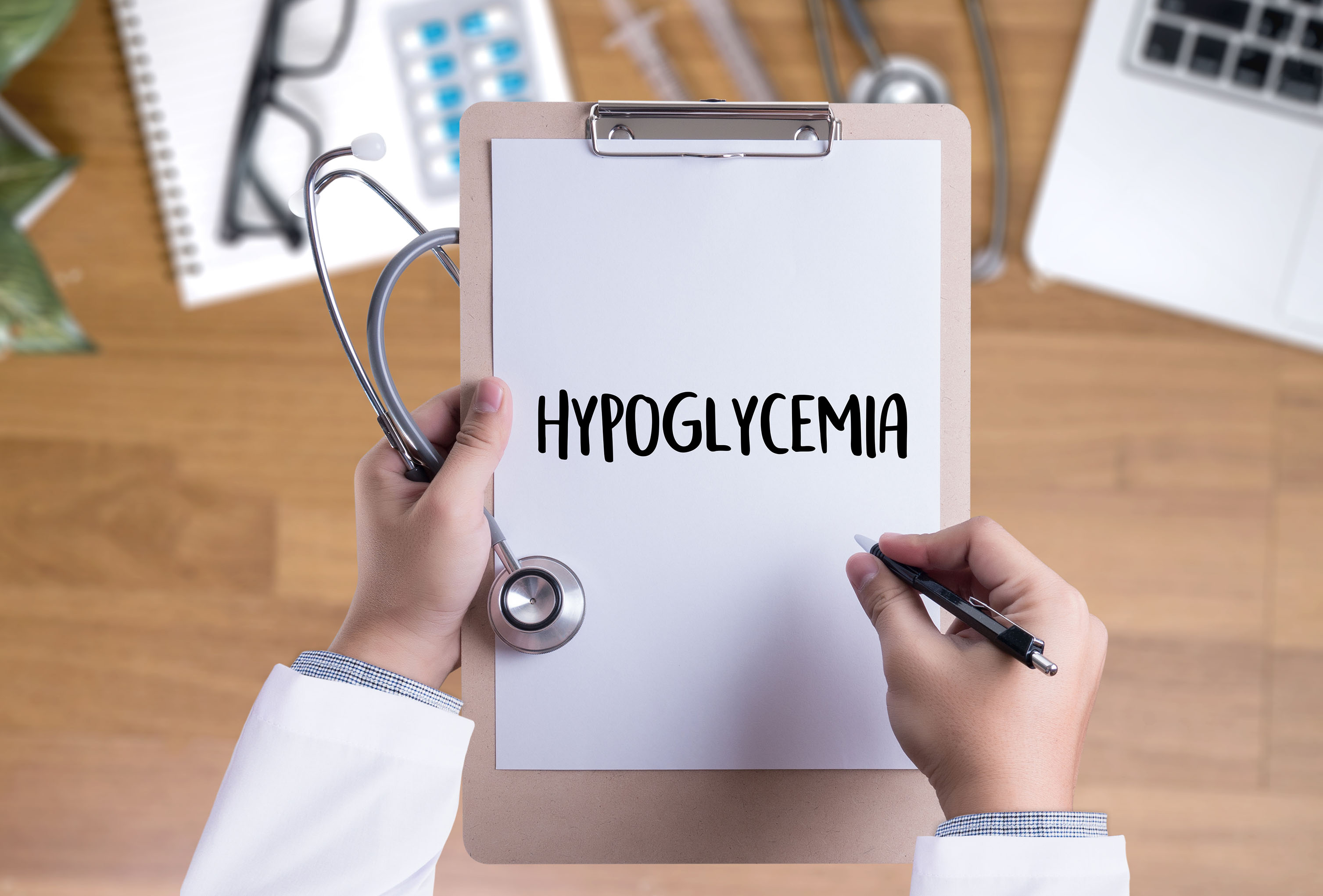Hypoglycemia or low blood glucose levels are one of the most feared complications of diabetes treatment. It happens when blood glucose levels drop below 70 mg/dl (below normal range). It is a risk present in all insulin-treated diabetics and in those taking oral medications(insulin secretagogues). As people improve their management to achieve target blood glucose levels, the risk of hypoglycemia increases.
What causes hypoglycemia?
- Excess insulin – due to misjudgement/miscalculation of insulin dosage
- Decreased food intake – due to skipping or delaying a meal; low carbohydrate diet
- Increased physical activity
- Alcohol consumption
Preventing the occurrence of hypoglycaemia:
- Work with your diabetes care team to understand when your diabetes medications peak, if your medication schedule matches your meal plan and activity, and how to treat hypoglycemia when it occurs
- Learn what triggers low blood glucose levels
- Always carry a glucometer with you – Frequent monitoring of blood glucose levels is the best way to identify and prevent the serious consequences of hypoglycemia.
- Always carry some carbohydrate snacks with you especially when you’re travelling
- Carry your medical identification card
- Mild – moderate hypoglycaemia (capable of self-treating)
- Sudden huger
- Headache
- Trembling
- Rapid heartbeat, pale skin
- Sweating, Weakness, fatigue, anxiety, dizziness
- Poor coordination
- Numbness or tingling around mouth or lips
- Confusion/irritability/nervousness
- Slurred/slow speech
- Blurred vision

How to treat mild-moderate hypo episode?
- Hypoglycemia requires prompt treatment. In case of doubt, take the safe route and treat for hypoglycemia
- Early recognition coupled with appropriate treatment is critical for effectively managing hypoglycaemia
Follow “Rule 15”
Step 1 : Check your blood glucose levels. if it is below 70 mg/dl, eat 15 grams of carbohydrates. If checking is not possible-still take 15 grams of carbohydrates to be safe .
Step 2 : Wait for 15 minutes-this is just to see if you are feeling better with the carbohydrates dose (step1)
Step3 : Check your blood glucose levels again; if it is still lower than 70 mg/dL-repeat step 1 to 3
Step 4 : Finally, check your glucose levels after 1 hour. You may need an extra carbohydrate snack even if it wasn’t planned earlier.
You can have either of these to help you recover from a “”Hypo episode”(Mild-moderate)
- 3-4 glucose tablets
- 1/2 cup fruit juice/150 ml regular soda(soft drink)
- 3 teaspoons(15 g) of sugar/honey/glucose/roohafza syrup dissolved in water
- 3 toffees
- 3 tablespoons raisins
- 3 glucose biscuits
2) Severe hypoglycemia (not capable of self – treatment)
- Confusion
- Becoming argumentative or combative
- Extreme tiredness
- Seizures or convulsions
- Unconsciousness
Note: if not treated, the blood glucose continues to fall and the person might go into coma)
For a person suffering from “Severe hypoglycemia”
If the person in conscious give –
- 20 g of glucose tablets
- 4 teaspoons (20g)of sugar/honey/syrup
- 1 cup of juice/regular soda/soft drink
If unconscious,
- 1 mg of glucagon
- Transport to emergency facility for I.V. dextrose
Self-Monitoring of Blood Glucose (SMBG)

Regular SMBG increases the proportion of individuals achieving their glycaemic targets
Individuals should monitor postprandial glucose as part of their SMBG schedule
Regular discussion of results with diabetes care team is essential
Summary of Requirements for Performing SMBG by Diabetes Type
Type-1 diabetes
- Perform SMBG three or more times per day.
- Adjust intensity of monitoring to intensity of insulin therapy.
- Perform SMBG three or more times every day when multiple doses of
Type-2 diabetes
- The exact frequency is undetermined.
- Perform SMBG at a sufficient rate to reach glucose goals.
- If taking insulin therapy, perform SMBG three or more times each day.
Gestational diabetes mellitus
- Perform SMBG three or more times each day.











